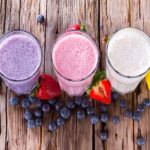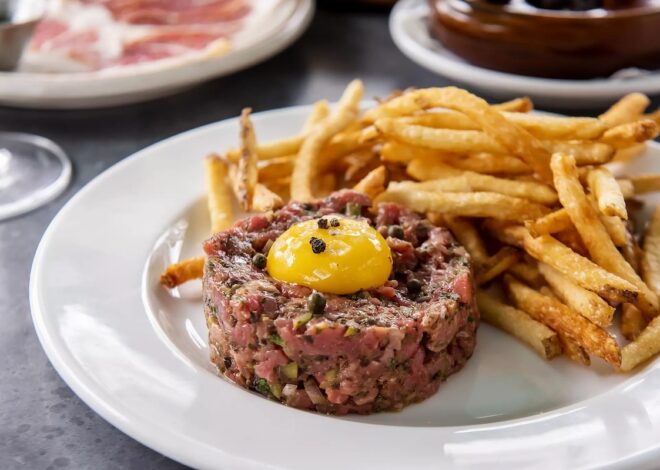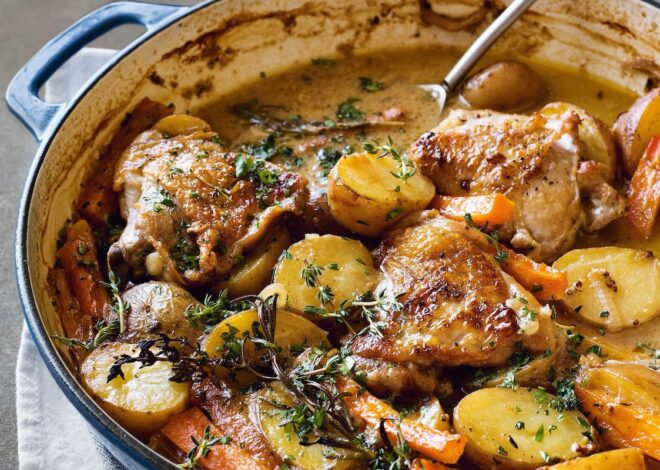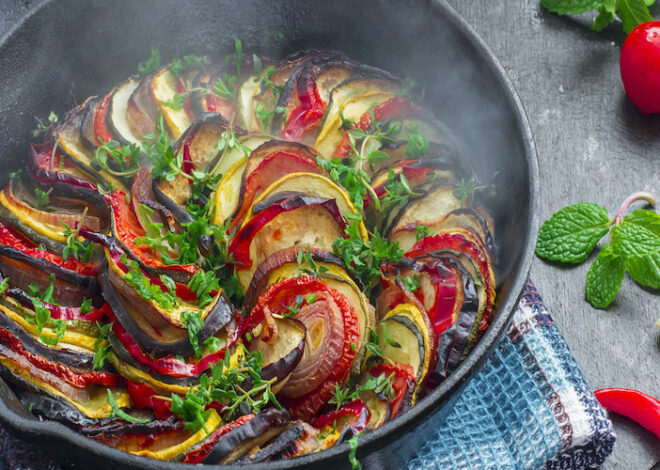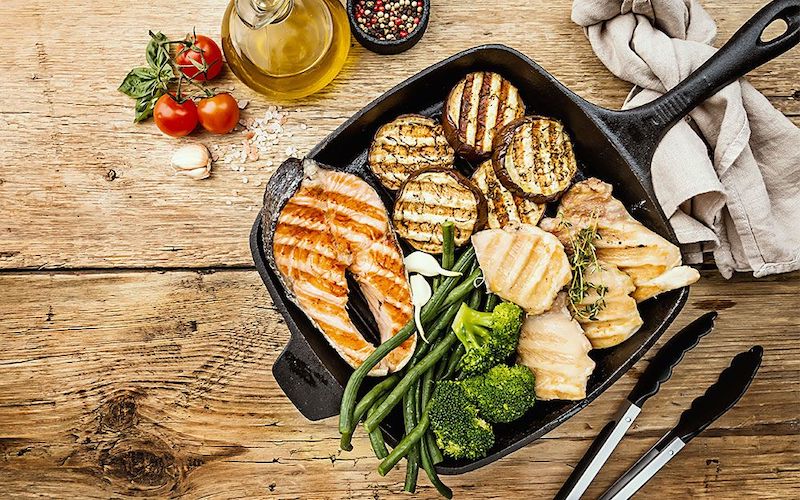
What is the Volumetrics Diet? Benefits and detailed 7-day menu
What is the Volumetrics Diet? The Volumetrics Diet was developed by Dr. Barbara Rolls. According to this diet, instead of focusing on cutting calories severely, you only need to prioritize foods that are low in energy density but rich in nutrients and make you feel full longer. Let’s explore with Evaworlds the basic principles and great benefits of the Volumetrics Diet. Along with that is the detailed menu.
What is the Volumetrics Diet?
Volumetrics is a weight loss approach that focuses on eating more foods that are high in volume but low in calories. Instead of counting calories, this diet encourages us to choose foods that are low in energy density.

Why is Volumetrics effective?
- Feel fuller longer: When you eat large amounts of food, you feel fuller longer, reducing cravings and snacking.
- Reduce your calorie intake: By prioritizing low-calorie foods, you can easily reduce the amount of calories you consume each day.
- Provide adequate nutrition: The Volumetrics diet encourages you to eat plenty of vegetables, fruits, whole grains, foods rich in fiber and nutrients necessary for the body.
Basic principles of Volumetrics
Here are some principles to remember when applying the Volumetrics Diet:
- Divide foods into groups: Foods are divided into groups based on their energy density. You should prioritize foods with low energy density and limit foods with high energy density.
- Drink plenty of water: Water helps increase feelings of fullness and aids metabolism.
- Eat slowly and chew thoroughly: This helps you enjoy the delicious taste of food and control the amount of food you eat.
- Choose foods rich in fiber: Fiber helps you feel full longer and is good for your digestive system.
See more:
- A low carb diet: The secret to health and shape
- Anti-inflammatory diet and detailed instructions on how to do it
- Ornish Diet – Benefits, effective 7-day menu you need to know
Suggested one-week menu for Volumetrics Diet
Here’s a sample one-week menu on the Volumetrics diet, focusing on low-calorie-density foods to help you feel full without taking in too many calories.
Monday
- Breakfast: Greek yogurt with fresh berries and a handful of flaxseeds.
- Lunch: Grilled chicken salad with greens, tomatoes, cucumbers and a lemon dressing.
- Dinner: Grilled salmon with steamed vegetables and a small portion of brown rice.
- Snack: Carrots and celery with hummus.
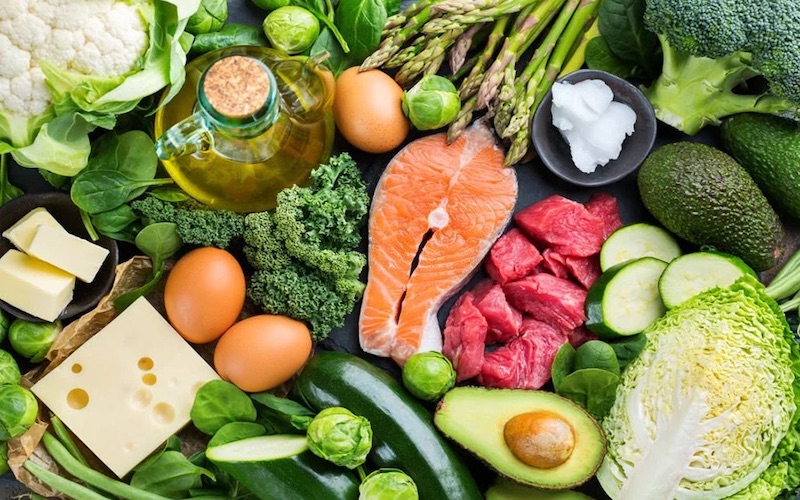
Tuesday
- Breakfast: Green smoothie with banana, spinach, almond milk and a little protein powder.
- Lunch: Vegetable soup with lentils.
- Dinner: Grilled chicken breast with roasted sweet potatoes and steamed broccoli.
- Snack: Apple with peanut butter.
Wednesday
- Breakfast: Oatmeal with berries and chia seeds.
- Lunch: Quinoa salad with spinach, black beans, corn and a lemon dressing.
- Dinner: Shrimp stir-fry with greens and a small portion of brown rice noodles.
- Snack: Sliced watermelon.
Thursday
- Breakfast: Fried egg with bok choy and tomato.
- Lunch: Tuna sandwich with lettuce and tomato.
- Dinner: Tofu stir-fry with vegetables and brown rice.
- Snack: Mixed berries.
Friday
- Breakfast: Greek yogurt with granola and berries.
- Lunch: Chickpea salad with greens, tomatoes, cucumbers and lemon dressing.
- Dinner: Grilled beef with roasted vegetables and a small potato.
- Snack: Pear.
Saturday
- Breakfast: Strawberry smoothie with almond milk and chia seeds.
- Lunch: Whole wheat toast with avocado and hard-boiled egg.
- Dinner: Grilled fish with steamed greens and quinoa.
- Snack: Pistachios.
Sunday
- Breakfast: Oatmeal with banana and honey.
- Lunch: Vegetable soup with chicken.
- Dinner: Grilled chicken with roasted vegetables and sweet potatoes.
- Snack: Grapes.
Note:
- Drink enough water: Make sure you drink enough water throughout the day to help you feel full and aid in weight loss.
- Control your portions: Pay attention to your portion sizes and make sure you don’t overeat.
- Exercise: Combine your diet with regular exercise for best results.
See more:
- What is the Nordic Diet? Benefits and simple, effective implementation
- Learn more about Oatmeal ozempic weight loss
- Keto menu for beginners: Detailed, easy-to-follow instructions
Can I lose weight on the Volumetrics Diet?
The Volumetrics diet focuses on increasing the amount of food you eat but reducing the amount of calories you take in. By eating more low-energy foods like vegetables, fruits, whole grains, etc., you will feel full longer without consuming too many calories.
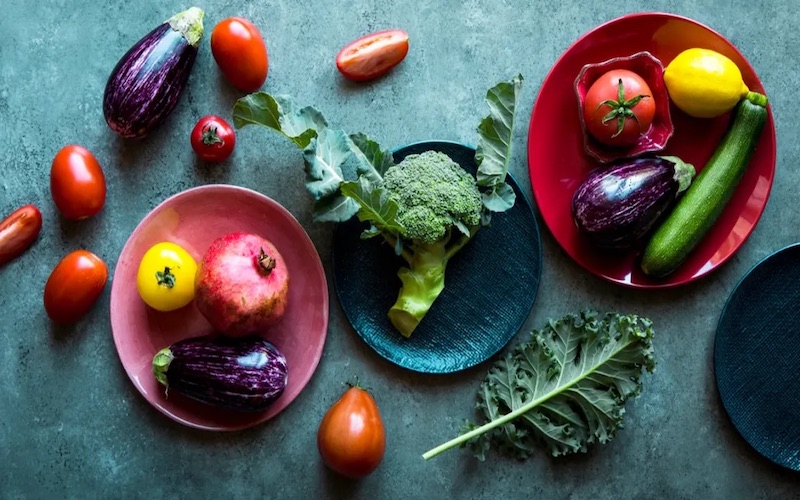
Specifically:
- Increase satiety: Eating foods rich in water and fiber helps you feel full longer. This helps reduce cravings and prevent snacking.
- Reduce Calorie Intake: By prioritizing foods with low energy density, you naturally reduce your daily calorie intake.
- Improve nutritional quality: This diet encourages eating lots of vegetables, fruits and whole grains, providing essential nutrients for the body.
However, you need to remember that losing weight is a long-term process and requires perseverance. Maintaining a combination of the Volumetrics diet with regular exercise will help you achieve your weight loss goals effectively and sustainably.
Is Volumetrics Easy to Follow?
The Volumetrics diet is often considered relatively easy to follow. That’s because it doesn’t require you to cut out any food groups entirely. Instead, you focus on increasing your intake of low-energy-density foods, such as vegetables, fruits, and whole grains. This makes it easy to adapt to a wide range of tastes and lifestyles.
However, you also need to note a few points:
- It takes time to adjust: Switching from a high-calorie diet to a lower-calorie diet can take some time for your body to adjust. You may feel hungry in the first few days.
- Food preparation requirements: To maximize the effectiveness of Volumetrics, you need to spend time preparing meals and choosing the right foods.
- Calculating energy density: While it’s not necessary to count every calorie exactly, understanding the concept of energy density can help you make better food choices.
See more:
- Is a Mediterranean diet healthy? – Unexpected benefits
- Military diet: Detailed 7-day menu and the most important notes
- How to improve gut health and 12 foods that are good for the intestines
Who Should Not Try the Volumetrics Diet?
Although the Volumetrics diet is generally considered safe and effective, it is not suitable for everyone. Here are some cases to consider carefully before applying:
- People with digestive disorders: This diet encourages eating a lot of high-fiber foods, so you may experience discomfort if you have digestive problems such as IBS (irritable bowel syndrome).
- People who need to gain weight: If you’re trying to gain weight, the Volumetrics diet isn’t a good choice because it focuses on eating lots of low-calorie foods.
- Người có vấn đề sức khỏe đặc biệt: Nếu bạn đang mắc một bệnh lý cụ thể, hãy tham khảo ý kiến bác sĩ trước khi bắt đầu bất kỳ chế độ ăn mới nào.
Conclusion
In summary, you have understood clearly what is the Volumetrics diet. This diet can be a good option for many people looking to lose weight healthily. However, as with any diet, it is important to listen to your body and find the method that works best for your overall health. Follow Evaworlds now.



